11-17-2024
Hawaii Helicopter Tour Tips
Aloha! This article may link to trusted Hawaii resources (like Discount Hawaii Car Rentals) at no extra cost to you. Mahalo for your support!
Hawaiian Helicopter Tours
Verdant Valleys, Volcanic Vistas, and Waterfalls Galore!
A helicopter tour in Hawaii is one of the most exciting and enjoyable ways to really see the islands for what they are - jewels of beauty in the expansive Pacific Ocean. The vast majority of the islands can only be seen from the air, so a helicopter tour is always one of out top recommendations for Hawaiian must-do activities.
The views are beyond describing in words... they are simply phenomenal and more than you could dare to dream about! By no other method can you see the islands' hidden valleys bursting with waterfalls, the verdant rainforests that drape the windward side of each island, or the many volcanic craters that tell the story of how these islands came to be through millions of years of eruptions. Hawaii is incredibly eclectic and unique; boasting a diversity you simply will not find anywhere else on the planet. To really appreciate it all, to really witness it before your own eyes, a helicopter tour is the best way to sightsee.
So you're convinced... a helicopter tour is in the works. There are definitely some tips and suggestions we can share, as we've been on our fair share of helicopter rides in Hawaii. We've flown with the doors on and with them off. We've flown in lots of different types of aircraft, and we've seen a lot of amazing things from the lava at Pu`u O`o on the Big Island of Hawaii to the dozens of waterfalls tucked into Wai`ale`ale crater on Kauai. Now we'll share some of our experiences and tips with you through 10 quick tips.
Tip 1
Know where you're sitting BEFORE you take the flight. Not including the pilot, most of the time you're going to be on a helicopter (A-Star and Eco-Star) with six other passengers, unless you take one of the flights in a Hughes 500, in which case you'll only have four passengers. If you're on one of the larger six passenger aircraft, it typically means two passengers are seated up front and the other four in the back. Two people in the back, in the middle, aren't going to have the greatest view - most likely they'll be the two people who least enjoy the flight as they'll have a limited view. If you have to pick between the A-Star and the Eco-Star, select the later; it has more room, larger windows, and is quieter. If you're fortunate, you'll be seated in the front of these two aircraft. On the Hughes 500, some companies offer flights with the doors off, which we highly recommend because there are no windows to worry about. It can be loud and chilly without the doors, but we can promise you the experience will be remembered for a lifetime. If you're lucky with the Hughes, you'll be seated in the back - more space and better views. Unfortunately having control over your seats on any aircraft is really in the helicopter companies hands - they base seating on weight. Rarely will they split up a couple, but weight is the deciding factor over being in the front or the back. One final tip if you're flying around the island. Most of the companies will fly clockwise around the island in question - so request a seat on the right side of the aircraft if at all possible. Most of the best views on all the islands will be on the right hand side.
Tip 2
Try and fly at the right time of day. Typically, late morning or early in the afternoon are the best times to fly in Hawaii. Flying at those times will mean limited shadows and more brilliant colors with the sun overhead. The one exception to this rule may be on Kauai. Since Na Pali is on the west side of the island where the sun sets, flights in the afternoon can be incredible along this stretch of coast as the valleys are lit up by the afternoon sun.
Tip 3
Fly early in your trip. Don't wait until the end of your trip to make the flight, do it early. We recommend this because you'll get a good overview of the island BEFORE you see it down on the ground (or by sea). It'll help you become geographically aware of where things are located too.
Tip 4
Make sure you do price comparison, especially online. The majority of companies will offer generous discounts for booking directly with them online.
Tip 5
Select a company with a good safety record. Tours that advertise they are certified as an FAA Part 135 Air Carrier are a great choice. This certification means that the company is subject to much higher standards than their general aviation counterparts. If you're ever in doubt about a companies record, then ask them flat out, "How many SAFE flying hours does my pilot have?" This may not exactly be your favorite task when thinking about taking helicopter flight, but it's important to do your homework. For those so inclined, you can also do a bit of research by looking up aviation accidents with the NTSB (National Transportation Safety Board). Make sure you select Helicopter as the category of aircraft and that you only search for the state of Hawaii. The results pages will help you clarify which company was involved in each accident. Don't let this bullet scare you off, we're just saying it's better to be safe than sorry.
Tip 6
Following up on the previous bullet, make sure you pay attention during the safety lesson before the flight. You may learn something important, and though it's highly unlikely you'll need to use anything you learn during the briefing, again, better safe than sorry. If you have questions, this is the time to ask the operator. Don't be shy, they've heard it all and will be happy to answer your questions.
Tip 7
If you plan to take photographs on the flight then make sure to wear darker clothing (preferably without any patterns) to reduce glare on the windows. If you're flying without the doors, make sure you have a neck strap and keep your camera safely around your neck during the flights. Helicopters can bank suddenly and you don't want to loose your prize camera out the open door. Set your speed settings to high, as you'll typically be moving at a good rate of speed throughout the tour. And while we're on the topic of cameras and photos - don't take the entire tour through your viewfinder, you'll really miss out on the experience. Take a snap shot here and there but let your eyes soak it all in first hand. We spent our first three or four flights glued to our cameras - but only when we set the camera down for a bit did we really experience the tours. Trust us on this one!
Grab Your Free Travel Guides!
Hawaii Intro Visitor Guide
+ Our Summary Guidesheets!
Includes the top must-see & do attractions, best times to visit, a monthly weather & visitor summary, and our tips on how to save when booking your car rental, tours, and activities. Plus, grab our free Hawaii Summary Guidesheets. Check out our Updated Hawaii Visitor Guides.
Tip 8
If you get motion sickness easily, you may want to strongly consider taking medication prior to your flight. You can also use one of the other methods available (like sea bands) if you don't feel like taking a medication that might make you drousy. While most of the helicopter rides we've been on have been smooth, sometimes the wind can make for an extra bumpy ride.
Tip 9
Be careful selecting what you wear the day of your flights. You'll be wearing headphones during the flight, so earings might not be a good idea; leave those in the car. If you're flying with the doors off, be mindful of what could blow out of the helicopter (hats, loose shoes, etc). Also, for the doors off flights, definitely try and wear a coat as it can get very chilly in the aircraft as you move around the island, not to mention wet in places.
Tip 10
Select the right island to tour. Helicopter rides can be expensive, so selecting the right island is important. If you're only visiting one island, then you don't have to worry about this. But if you're island jumping, you should know that some islands are better from the air than others. Which islands you say? Here are our favorites in order: Kauai, Big Island of Hawaii, Maui, Oahu, Molokai.
Hawaii Helicopter Tour Tips Photo Gallery
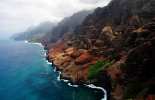
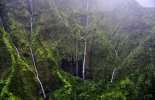
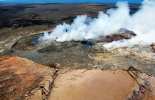
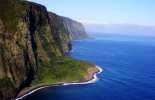
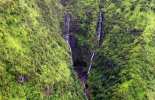
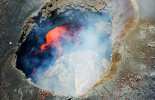
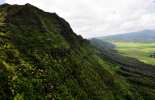
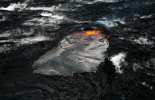
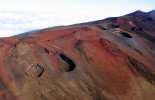
Affiliate Disclosure: We may earn commissions from some travel partners (like Amazon or Expedia) which helps us maintain this site. These links are at no extra cost to you and don't impact our honest & unbiased recommendations. Remove all the ads →













